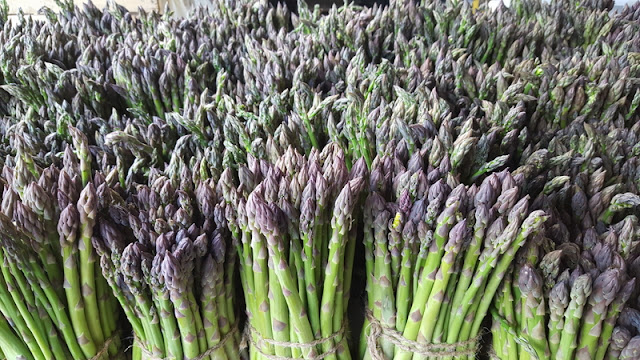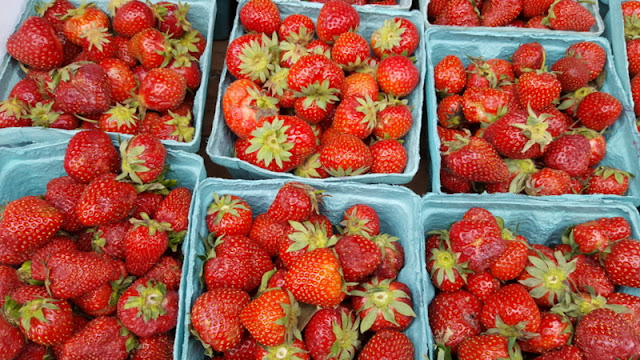Then there are people like me, who recognize quince as a delight of its own.
I was ready to roll up my sleeves, grab a peeler and a sharp knife and dust off my father-in-law's recipe for candied quince. (He hails from the area of Vynohradiv in Eastern Europe, an apple/pear/quince stronghold.)
When I first learned of quince, my first discovery was their enticing scent. The second thing I learned was to never eat them raw. Like hachiya persimmons, quinces are sufficiently astringent to feel as if they are ripping out the inside of your cheeks when you nibble on them.
I recently learned a new word that is used in connection with astringent fruit like quince and hachiya persimmons: bletting. Bletting is a process of decay or frost that renders intensely tart fruit softer and sweeter. I've let hachiyas soften (now I'll use this great new word) but I haven't bletted any quince. Yet.
Instead, I've cooked them. In Europe, the pectin-rich quince has a long and glorious history of being used for jams and preserves; in fact, the word "marmalade" stems from the Portugese word for quince jam, marmalda. From the Wikipedia entry on Marmalade:
The Romans learned from the Greeks that quinces slowly cooked with honey would "set" when cool (though they did not know about fruit pectin). Greek μελίμηλον (melimēlon, "honey fruit") transformed into Portuguese "marmelo"— from the Greek μῆλον (mēlon, "apple") stood for all globular fruits, and most quinces are too astringent to be used without honey. A Roman cookbook attributed to Apicius gives a recipe for preserving whole quinces, stems and leaves attached, in a bath of honey diluted with defrutum—Roman marmalade. Preserves of quince and lemon appear—along with rose, apple, plum and pear—in the Book of ceremonies of the Byzantine Emperor Constantine VII Porphyrogennetos, "a book that is not only a treatise on the etiquette of imperial banquetting in the ninth century, but a catalogue of the foods available and dishes made from them."
Medieval quince preserves, which went by the French name cotignac, produced in a clear version and a fruit pulp version, began to lose their medieval seasoning of spices in the 16th century. In the 17th century, La Varenne provided recipes for both thick and clear cotignac.
In 1524, Henry VIII received a "box of marmalade" from Mr Hull of Exeter. As it was in a box, this was probably marmelada, a solid quince paste from Portugal, still made and sold in southern Europe. Its Portuguese origins can be detected in the remarks in letters to Lord Lisle, from William Grett, 12 May 1534, "I have sent to your lordship a box of marmaladoo, and another unto my good lady your wife" and from Richard Lee, 14 December 1536, "He most heartily thanketh her Ladyship for her marmalado."
If you're used to cooking with apples or pears, you should be prepared: quince is a tough customer. No scooping out the seed pod with a demistasse spoon: you'll need a sharp paring knife to cut and yank the seeds out. But the results are worth it.
Candied Quince Compote
8 cups quince, peeled, cored and sliced lengthwise into 1/2" slices
4 cups water
1 1/2 cup sugar
1/2 lemon, sliced thinly
12 cloves
2 sticks cinnamon, optional
Combine all ingredients into a 4 quart stockpot. Bring to a boil then reduce to a simmer. Cook until the fruit is fork tender and rosy in color, about 30 minutes.

So you'll be glad to get acquainted with quince -- despite its occasional identity confusion.



















